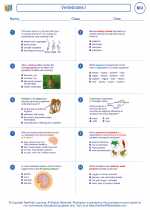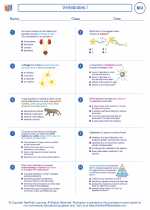Meanders
Meanders are sinuous, winding curves or loops in a river's channel caused by the natural movement of water. They are a characteristic feature of mature and old age rivers and are formed as a result of erosion and deposition along the river's path.
Formation of Meanders
Meanders are formed through a combination of erosion, transportation, and deposition processes. As a river flows, it erodes the outer banks through hydraulic action and abrasion, resulting in a gradual shift in the river's course. This erosion on the outer bank creates a curve or bend in the river, known as a meander. The water flows faster on the outer side of the bend, leading to erosion, while the inner side experiences slower flow and deposition of sediments.
Characteristics of Meanders
Meanders exhibit several key characteristics, including a sinuous shape, a tendency to migrate downstream over time, and a deeper channel on the outer bank and a shallower channel on the inner bank. As the meander develops, it may cut off sections of the river, forming oxbow lakes, and also contribute to the overall shaping of the landscape.
Importance of Meanders
Meanders play a crucial role in shaping the landscape and influencing the surrounding ecosystem. They contribute to the formation of floodplains and provide habitats for various species of plants and animals. Additionally, they are important for nutrient cycling and sediment transport within the river system.
Study Guide
When studying meanders, it's important to focus on the following key points:
- Understand the processes involved in meander formation, including erosion, deposition, and the role of water flow.
- Identify the characteristics of meanders, such as their sinuous shape, migration patterns, and impact on the river's channel.
- Recognize the importance of meanders in shaping the landscape and supporting ecosystem diversity.
- Explore real-world examples of meanders and their impact on local environments.
By mastering these concepts, students can develop a comprehensive understanding of meanders and their significance in river dynamics and landscape formation.
.◂Biology Worksheets and Study Guides High School. Vertebrates I

 Worksheet/Answer key
Worksheet/Answer key
 Worksheet/Answer key
Worksheet/Answer key
 Vocabulary/Answer key
Vocabulary/Answer key
 Vocabulary/Answer key
Vocabulary/Answer key
 Vocabulary/Answer key
Vocabulary/Answer key
